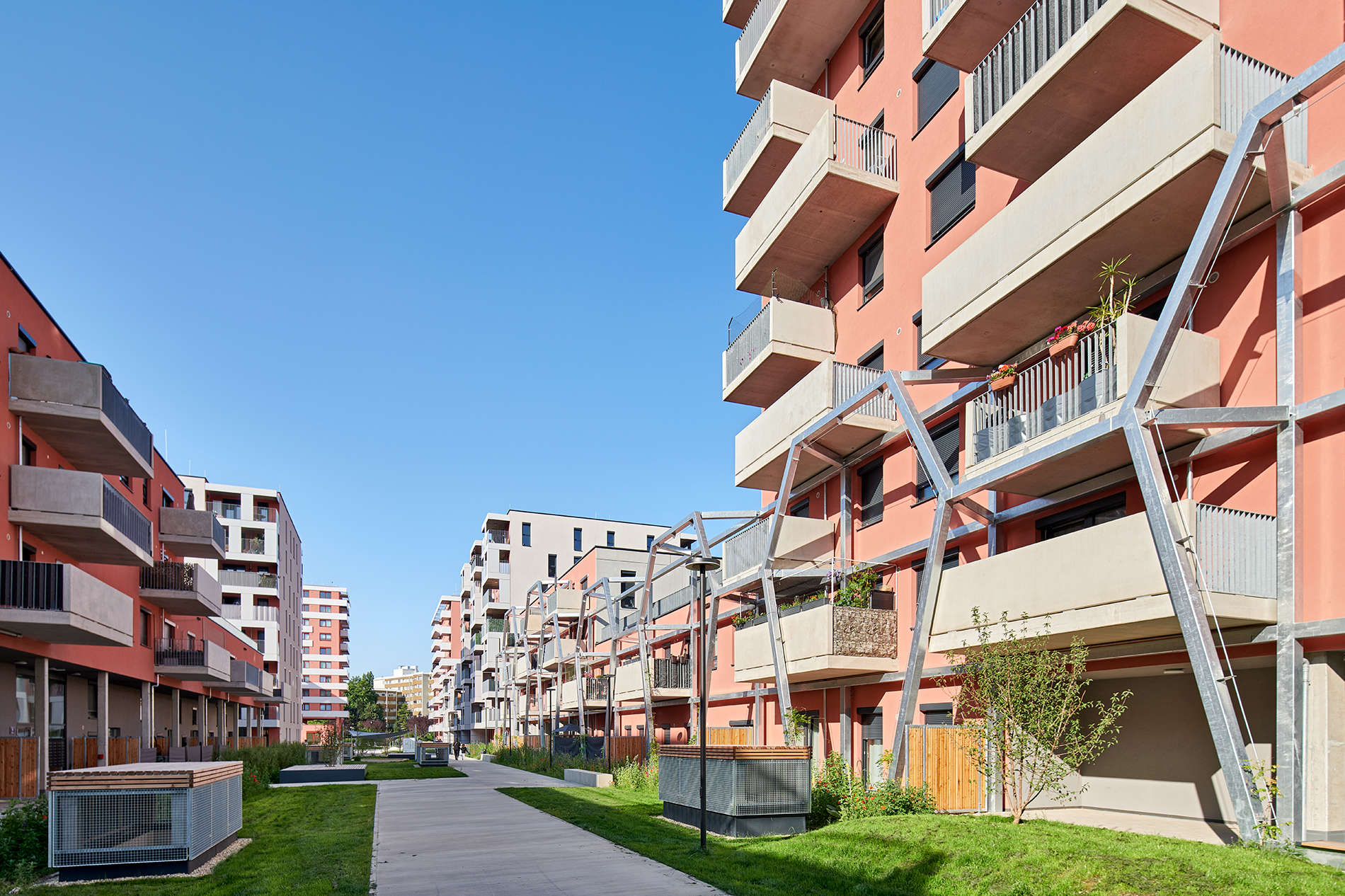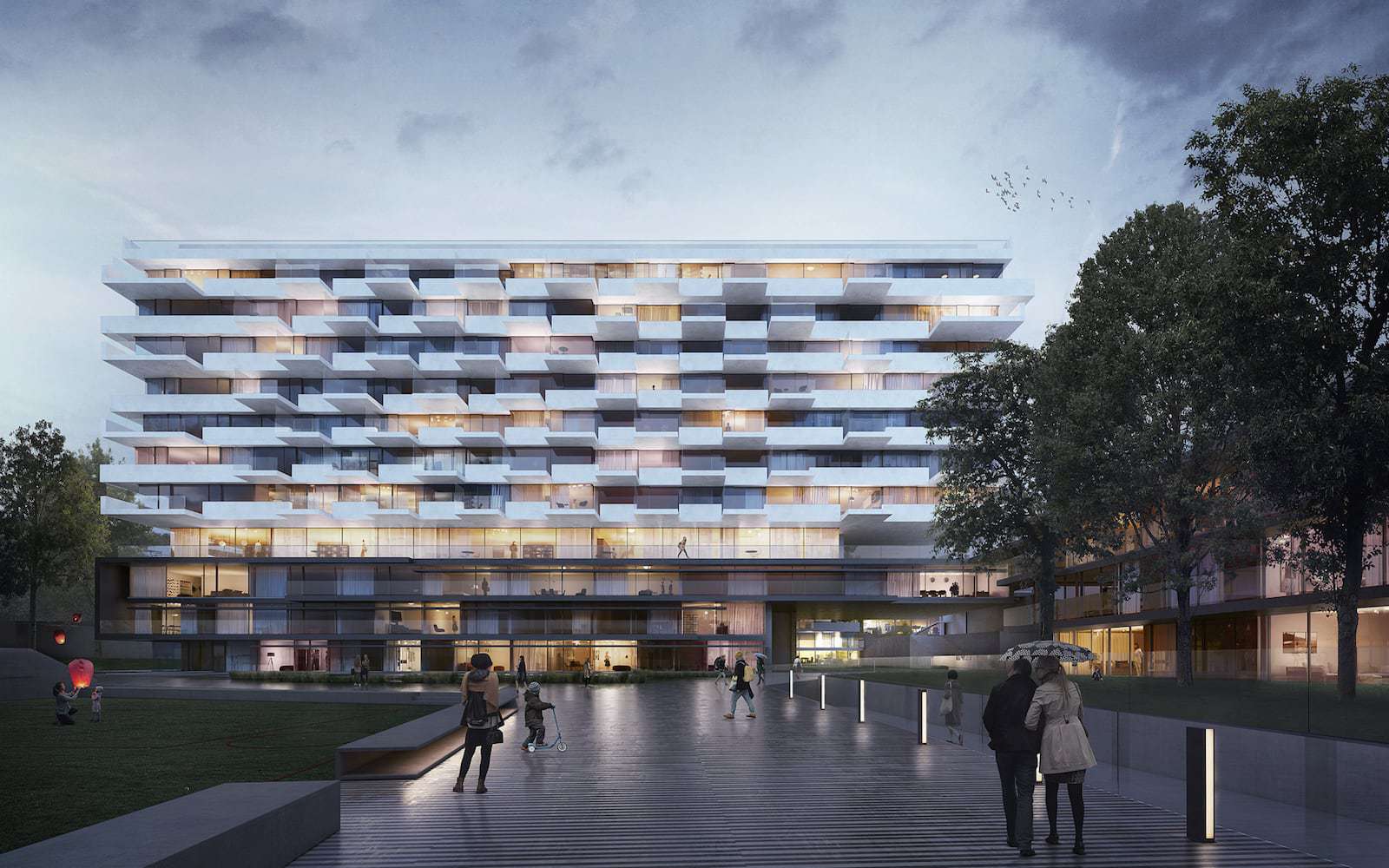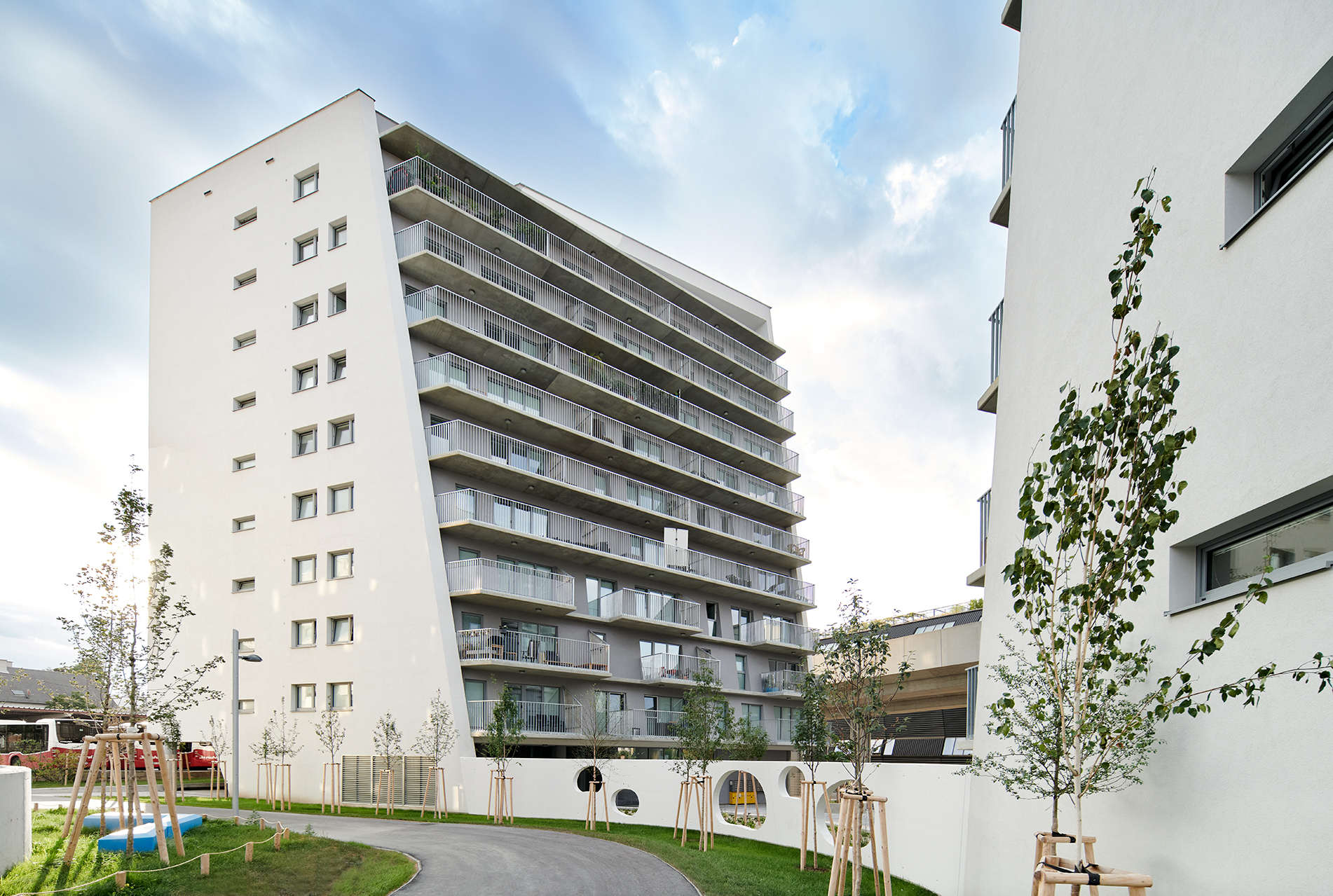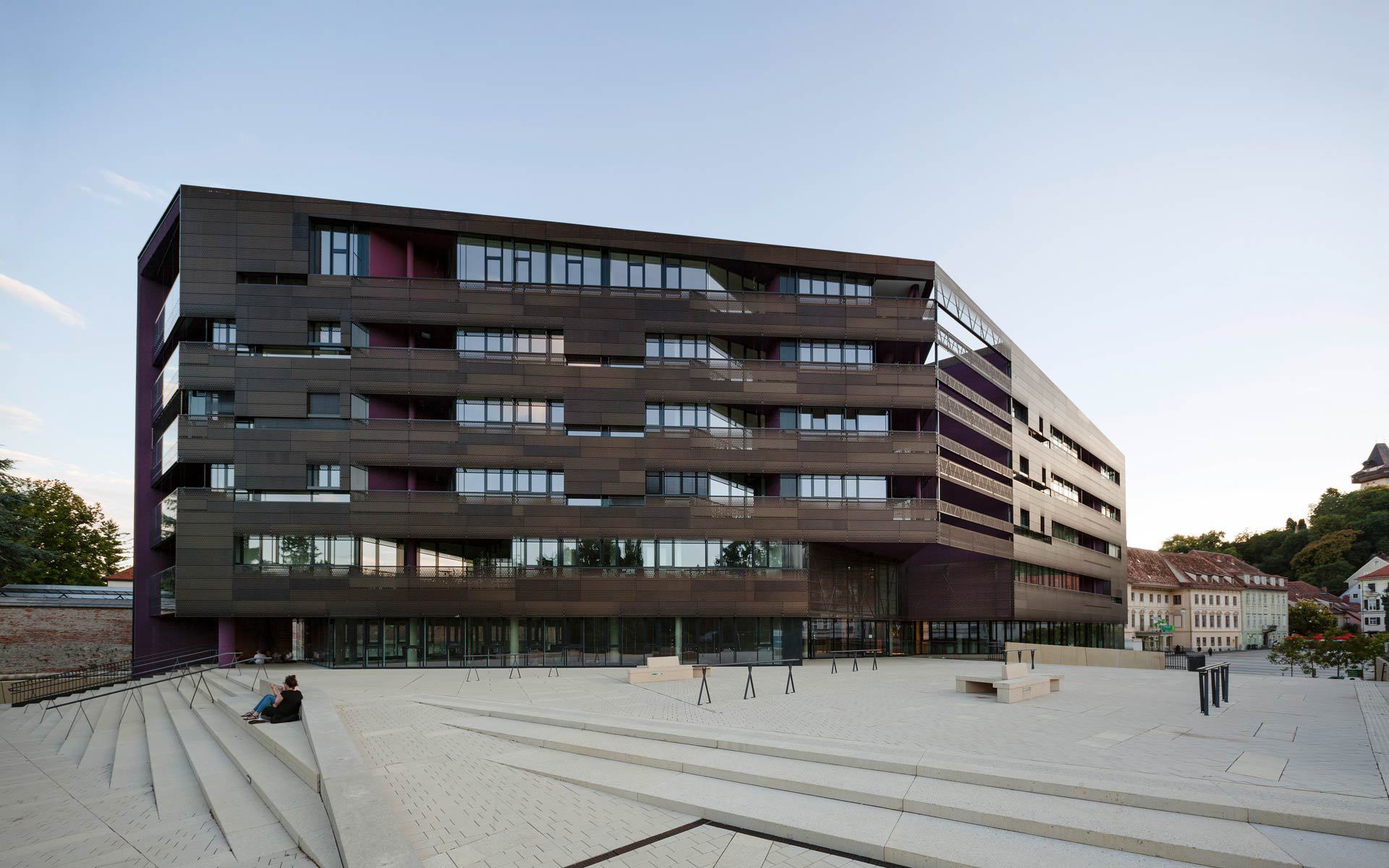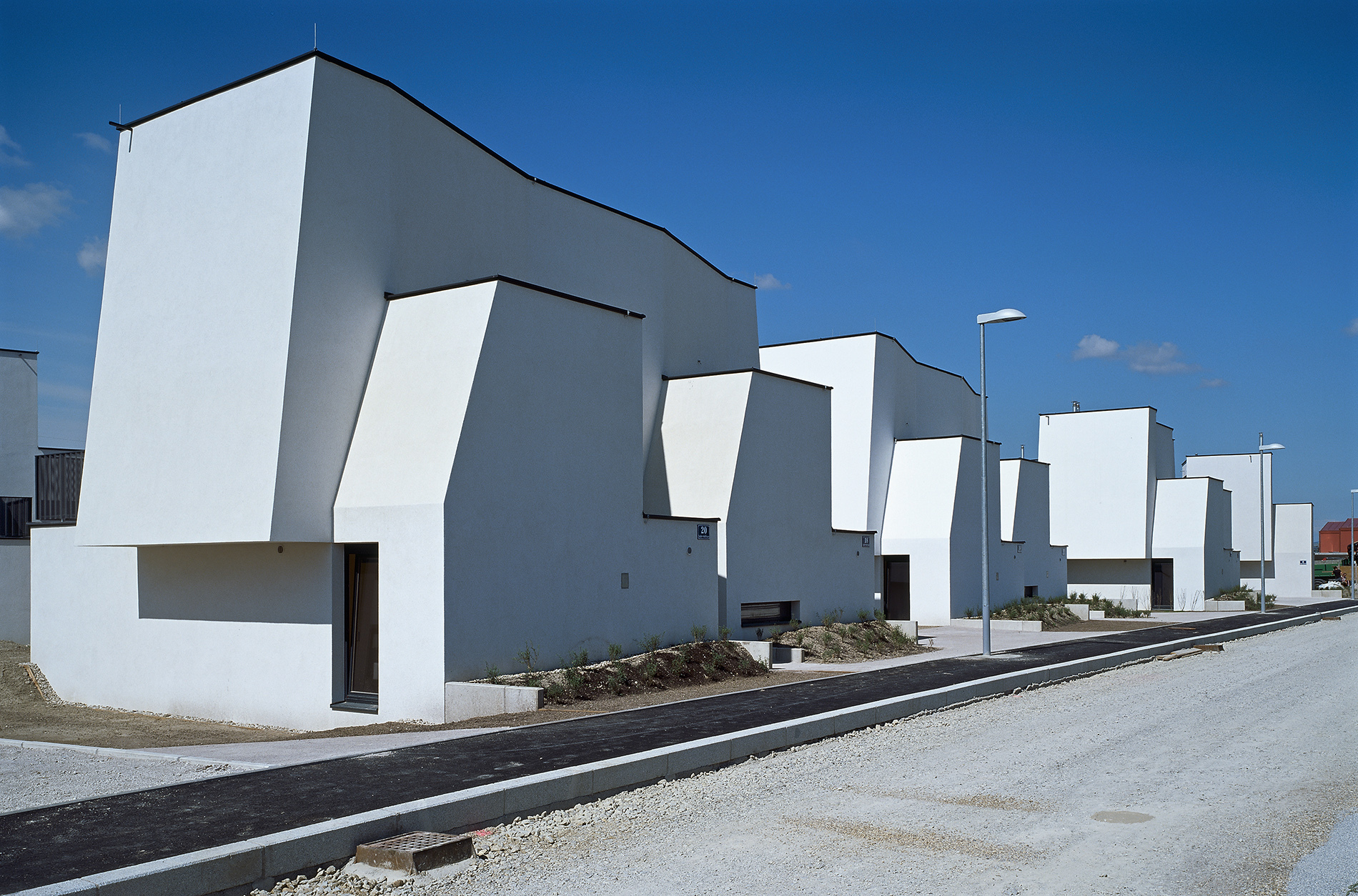The volume of the building complies with the constraints in the zoning plan. The existing block structure is broken up allowing routes to made through the activated internal courtyard. The two high points are made by means of a central corridor access system which, however, in terms of form differs clearly from the classic design of such circulation routes. Starting from the vertical circulation cores the corridors widen increasingly and through generous glazing at the end of the corridors form a structure that
Willi-Resetarits-Hof
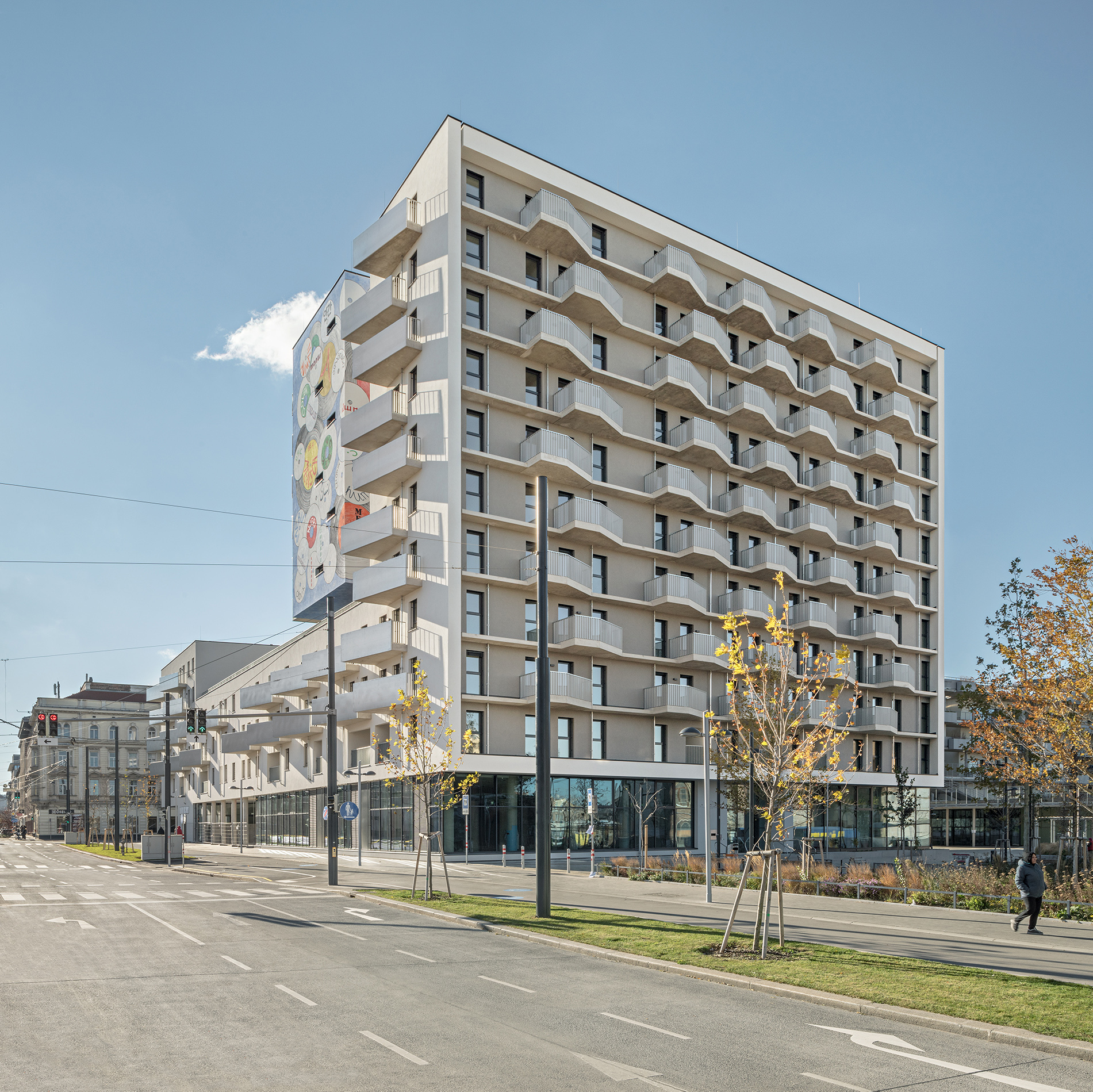
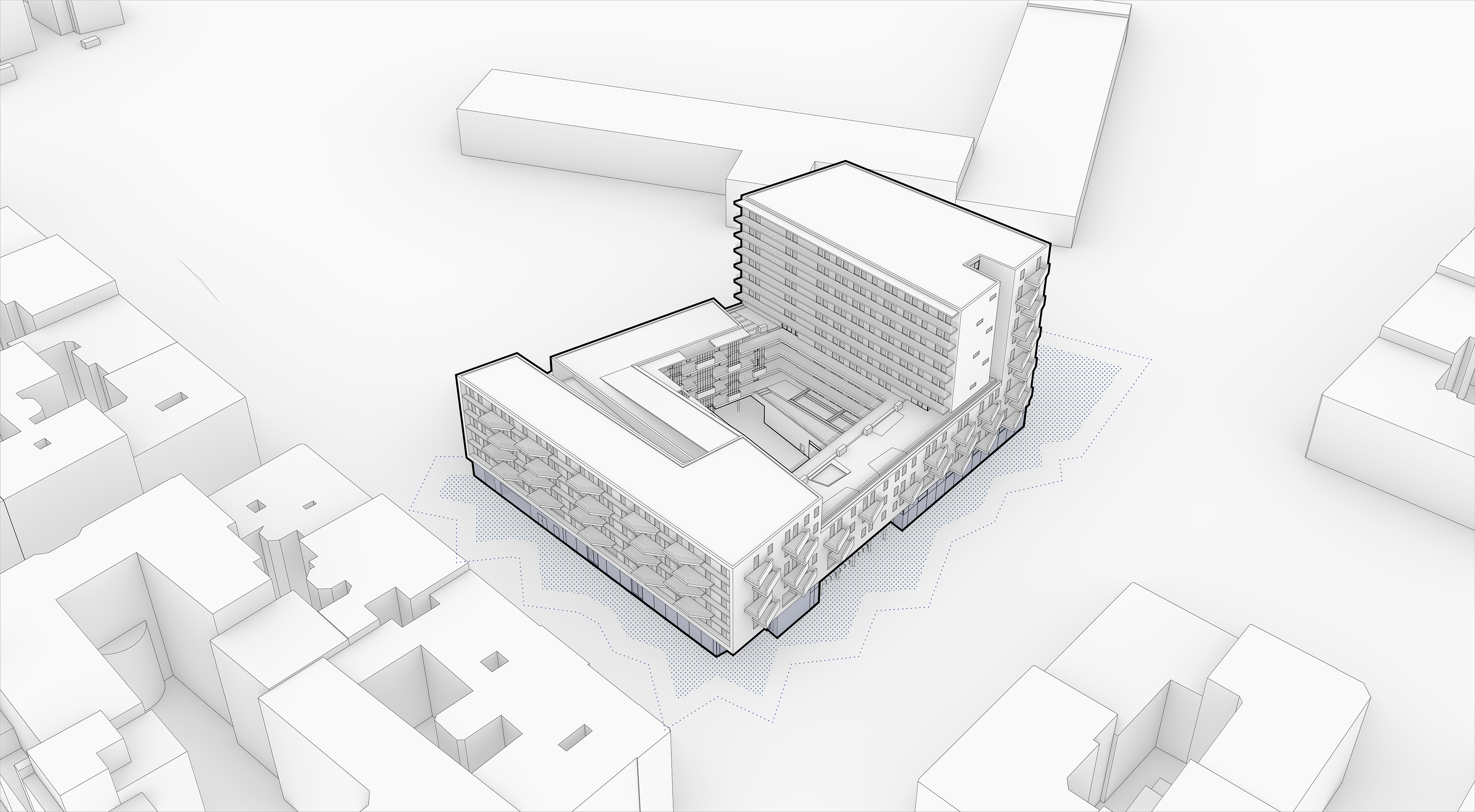
Year
2021
Venue
Vienna
State
Completed
Category
Living
Size
16.988 m²
Year |
Venue |
State |
Category |
Size |
|---|---|---|---|---|
2021 |
Vienna |
Completed |
Living |
16.988 m² |
Year
2021
Venue
Vienna
State
Completed
Category
Living
Size
16.988 m²
Urban design | Building site
The site forms part of one of the last large development areas in the inner-city area and through its central location offers an enormous range of qualities. It is just a few minutes on foot from the Main Train Station, the Belvedere or the Schweizergarten. Located in Vienna‘s 10th municipal district the Neues Landgut Quartier measures around 9 hectares in area. The present project occupies what is probably the most prominent corner in the entire site. Together with the Gösserhalle and Inventarhalle opposite the corner of Landgutgasse and Laxenburgerstraße forms a gateway to this new district, which is a direct extension of Columbusplatz. On a one-hectare site immediately to the west the new Innerfavoriten education campus is being erected. The urban design model, jointly formulated by the City of Vienna and the property developers ÖBB Immobilien, was issued on 26.02.2019.
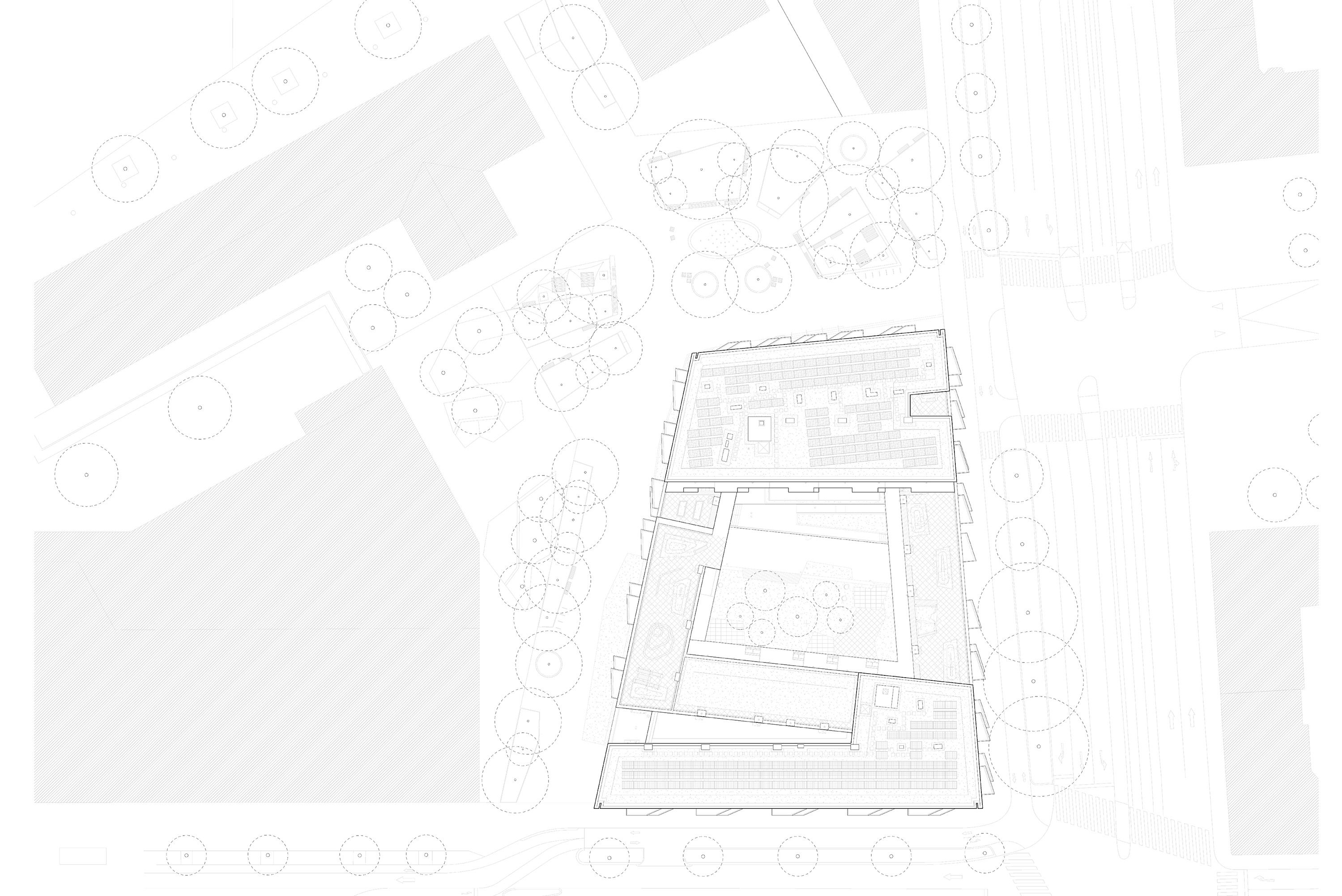
is directed towards the openings. The two deck access wings can also be reached from the circulation cores. The characteristics of this building are continuous corridors in the building’s internal courtyard. In terms of architectural structure, they are based on the classic Viennese “Pawlatschenhof” (an old building type in which the flats are reached from glazed “decks” running along the sides of the building) but are understood as a reinterpretation of this classic building type.
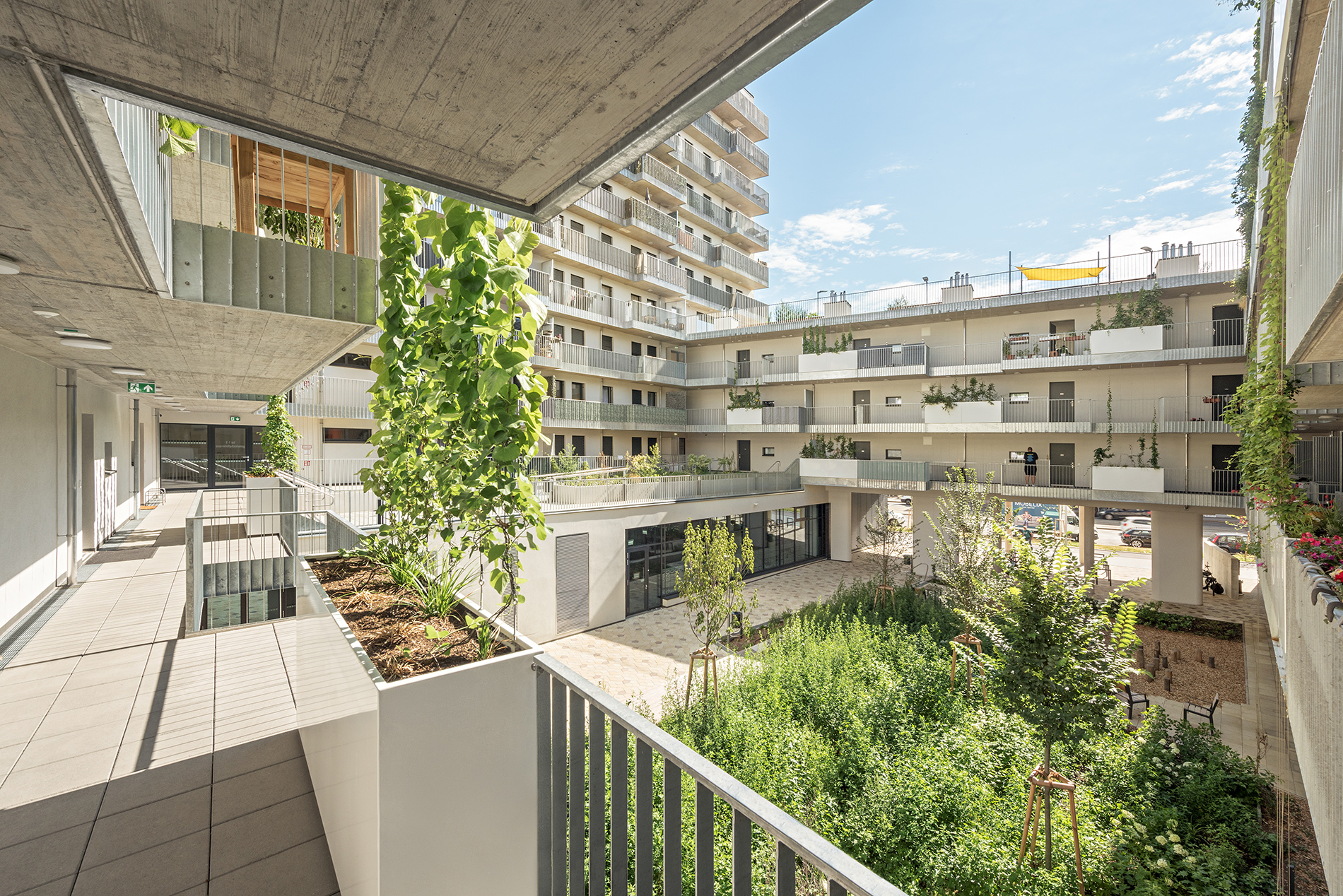
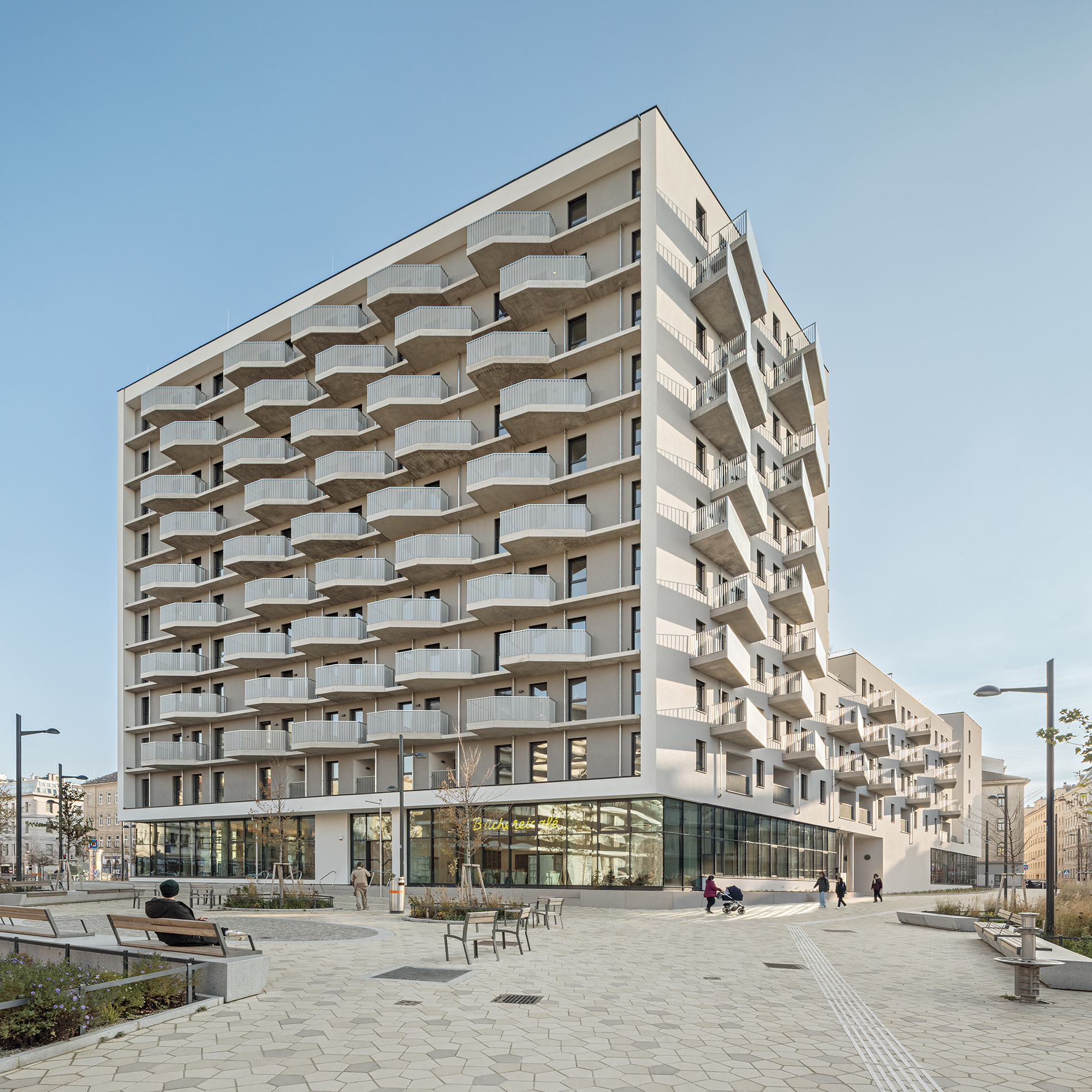
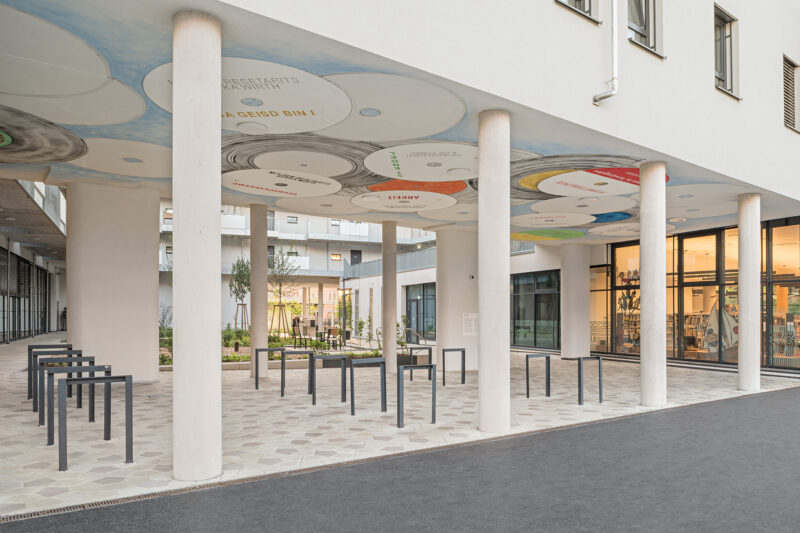
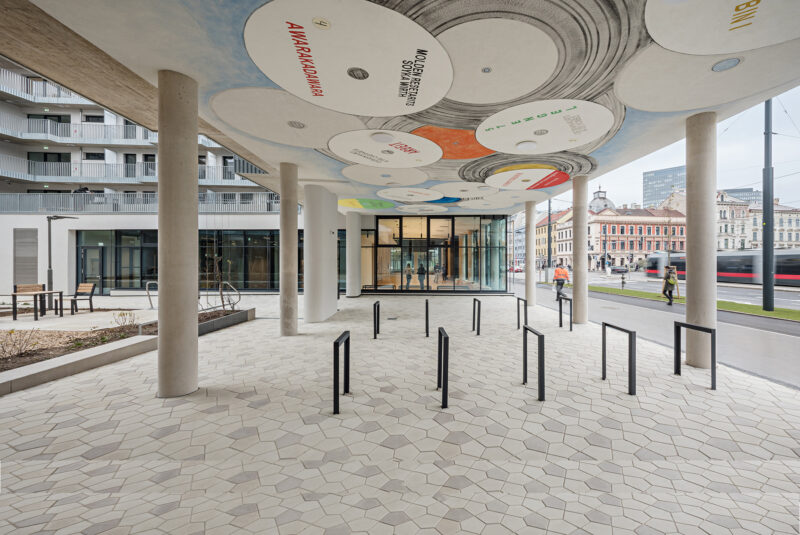
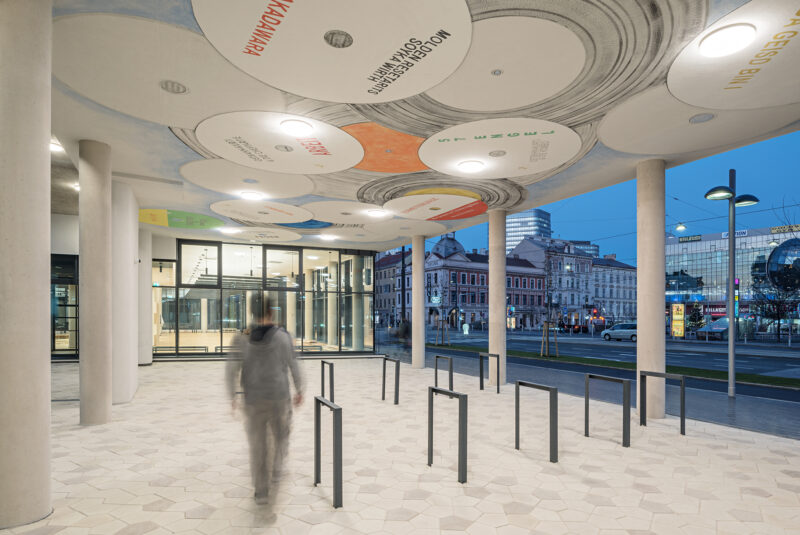
The courtyard as the “green heart” of the housing development responds to the demands that the urban climate makes on open space with densely planted green areas and surfaces that allow water to seep through.
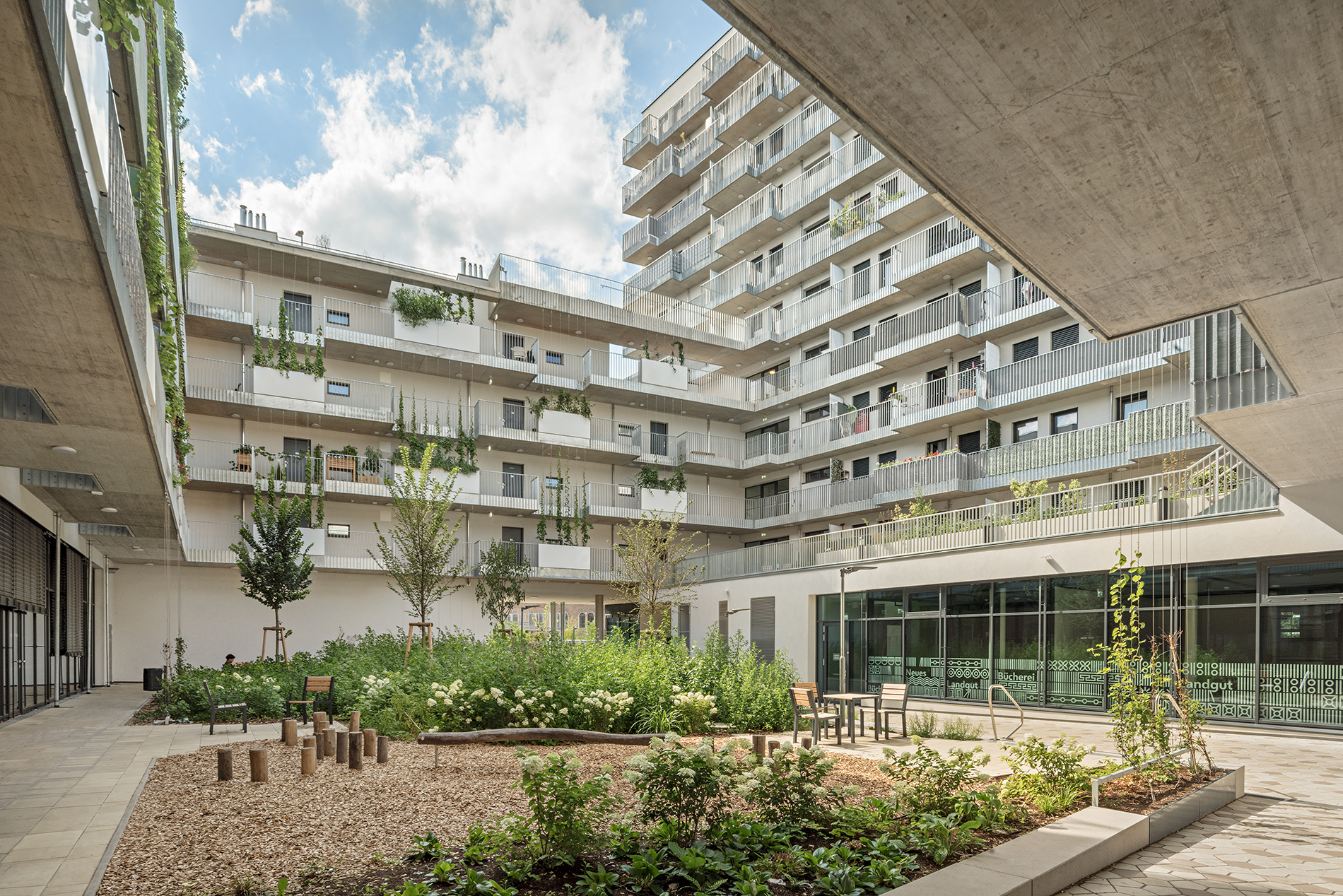
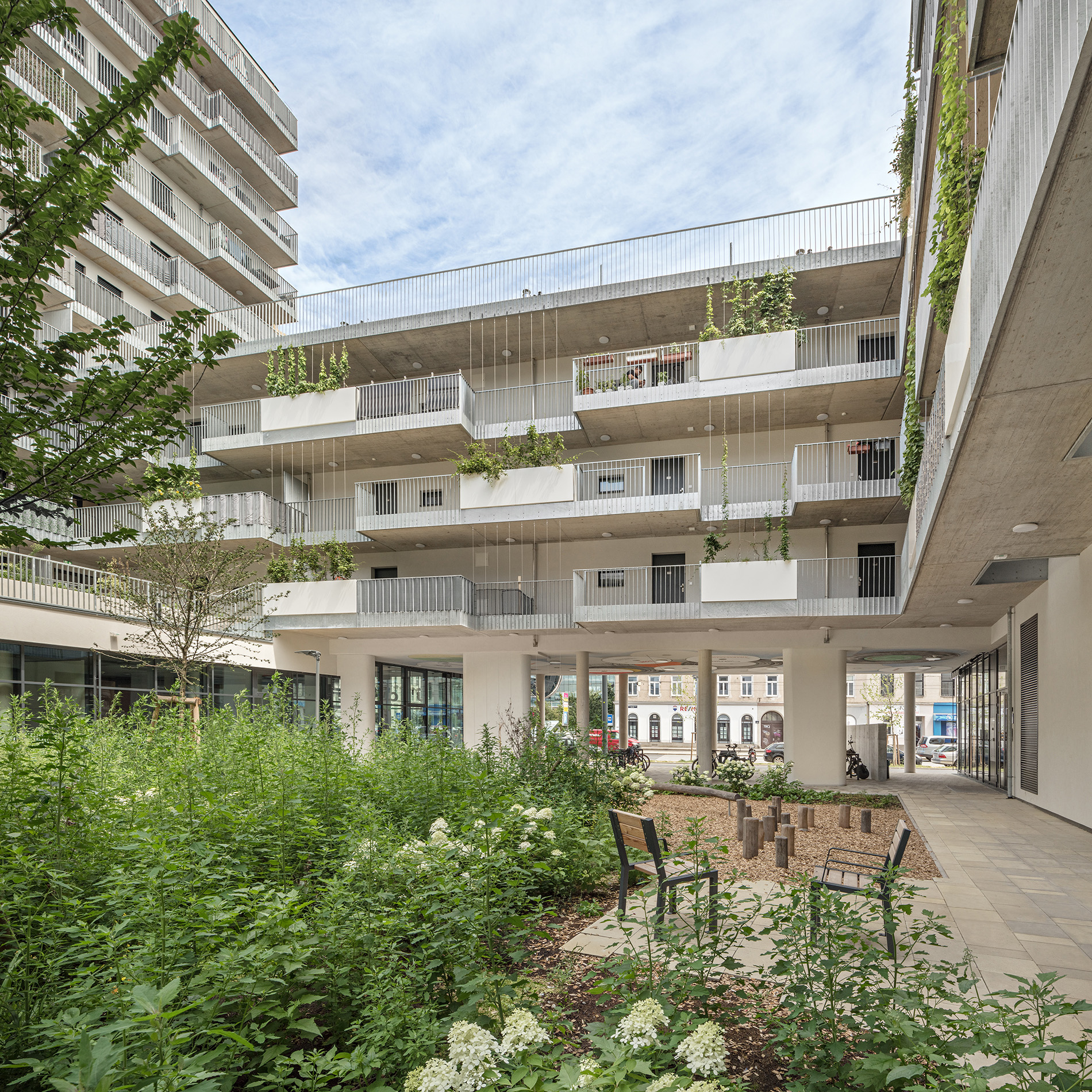
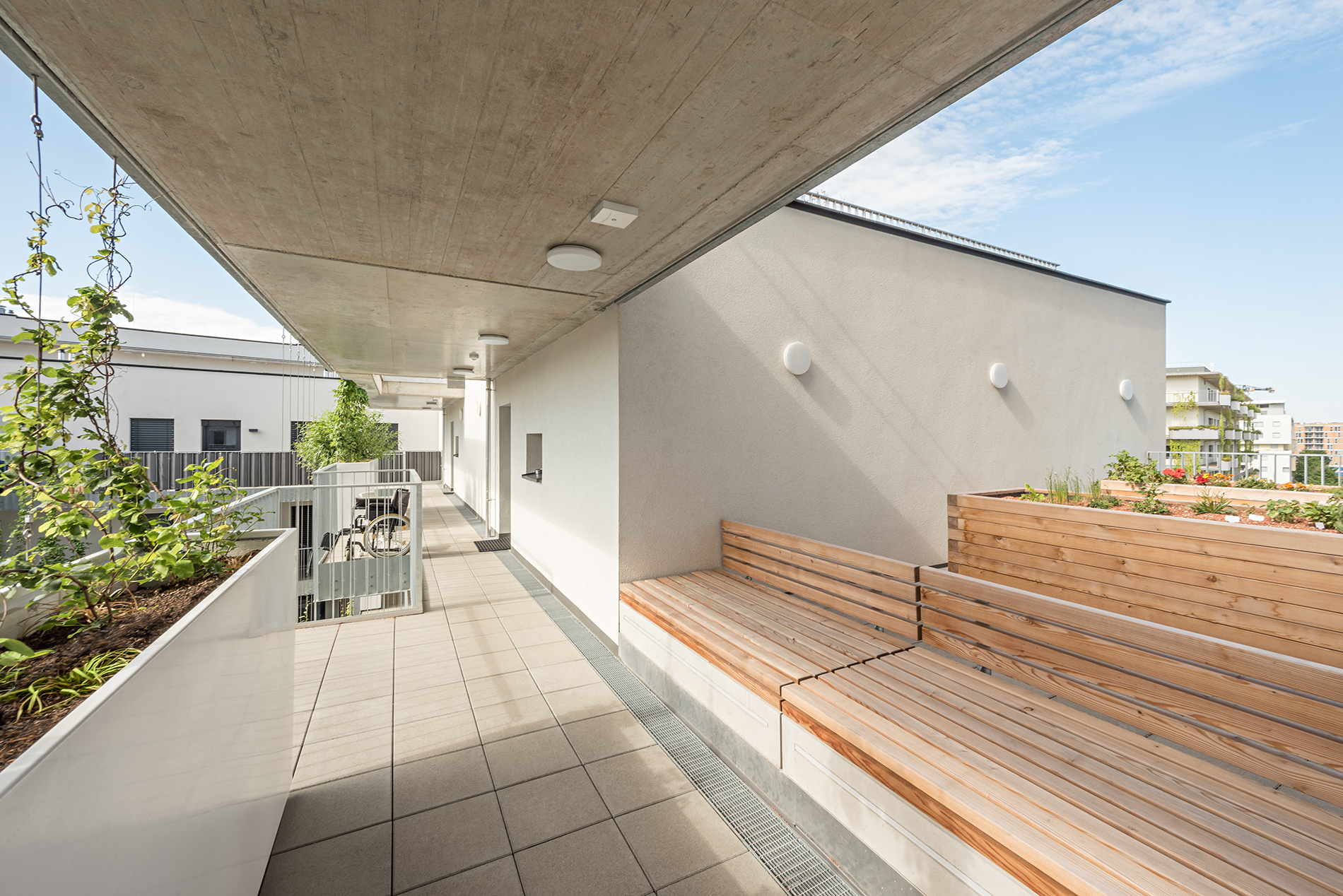
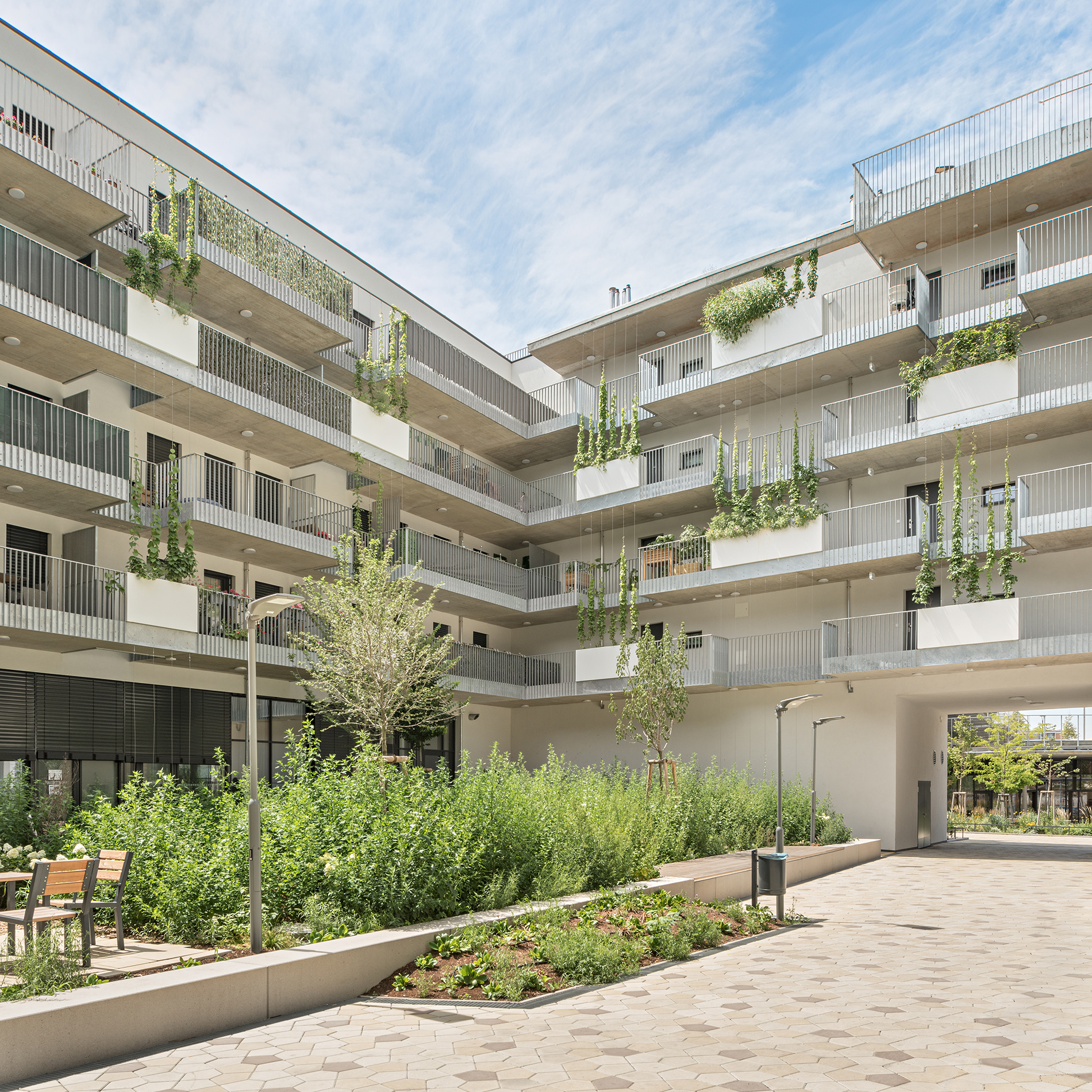
The basis for the design concept is a spatial division into calmer areas and those crossed by paths. To the west the courtyard opens to the Neues Landgut site, in an easterly direction there is a way through to Laxenburger Straße, so that the courtyard is also accessible to the public and its permeability is ensured. A raised area that results from a change of level will provide a green retreat for users and residents, a communal place for meetings and exchange. An opening in the underground garage allows three large trees with different forms of growth to be planted. They will introduce a landscape dimension to the courtyard and will offer all in the district a view of greenery with cool, fresh air and bird song. Vertical planting rooted in the ground and the widespread use of planters on the access decks and balconies ensure a contemporary and adequate adaptation to climate change. Two diverse kinds of light-coloured paving separate the courtyard into areas for movement and areas for rest.
Earth-bound vertical planting and planters ensure that green decks, which they provide an additional apartment-related outdoor space for residents. Large communal terraces on the roofs provide space for social exchange. The roof terraces augment the offers made to the residents and are devoted to different themes. The roof terraces on the 1st floor offer primarily places to sit and rest. The large roof terrace on the 4th floor is combined with a community room. Seating, areas of planting and a play area for small children make it an agreeable place to spend time. On the small terrace an urban farming area is provided for those interested in gardening. The planted courtyard uses the earth core for planting trees and undergrowth that tolerates shadow and has a natural cooling and climate function. The extensive roof planting uses a variety of plants as well as deadwood structures to create a sheltered area for species of soil animal that are sensitive to frost or drought.
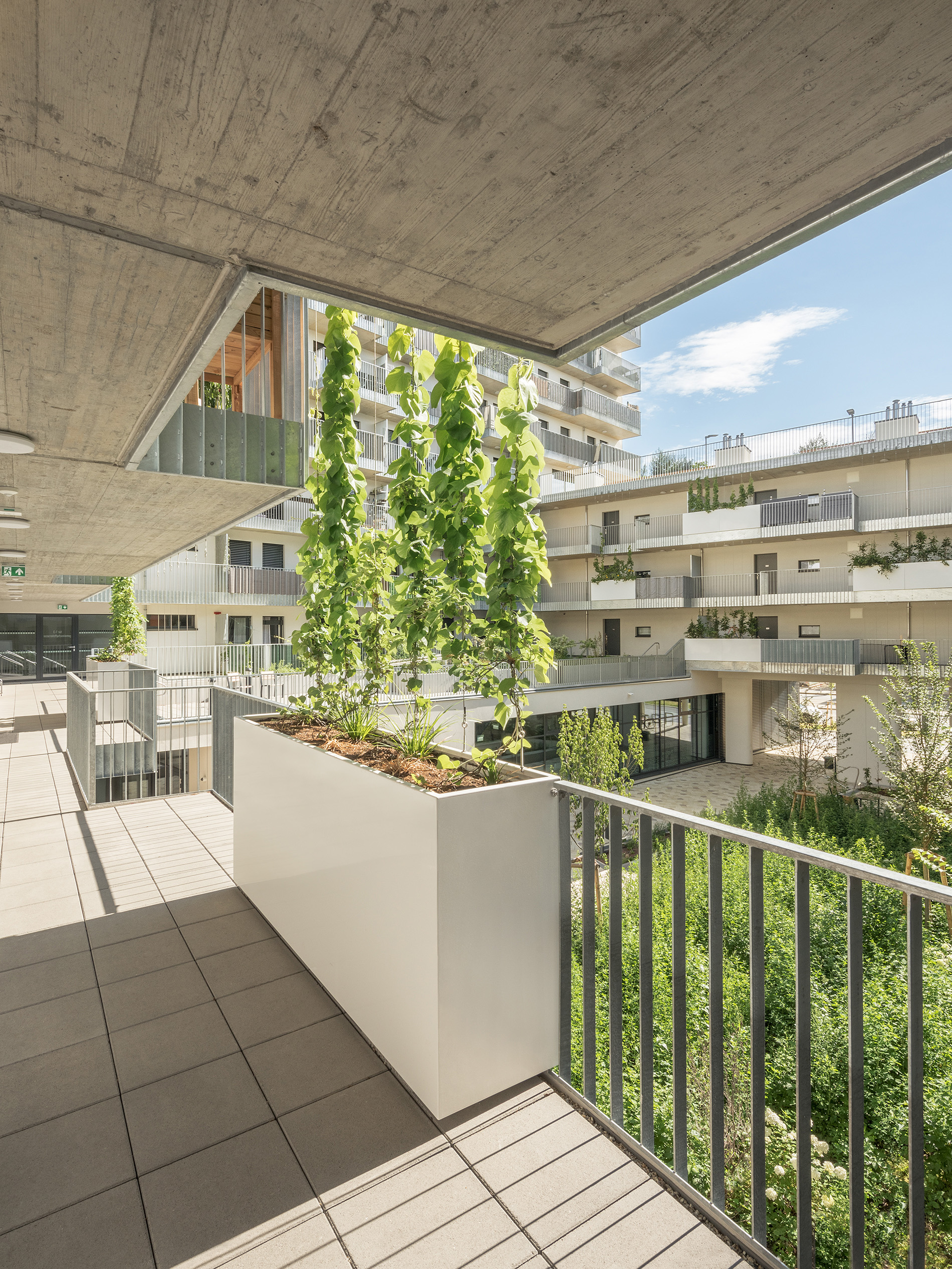
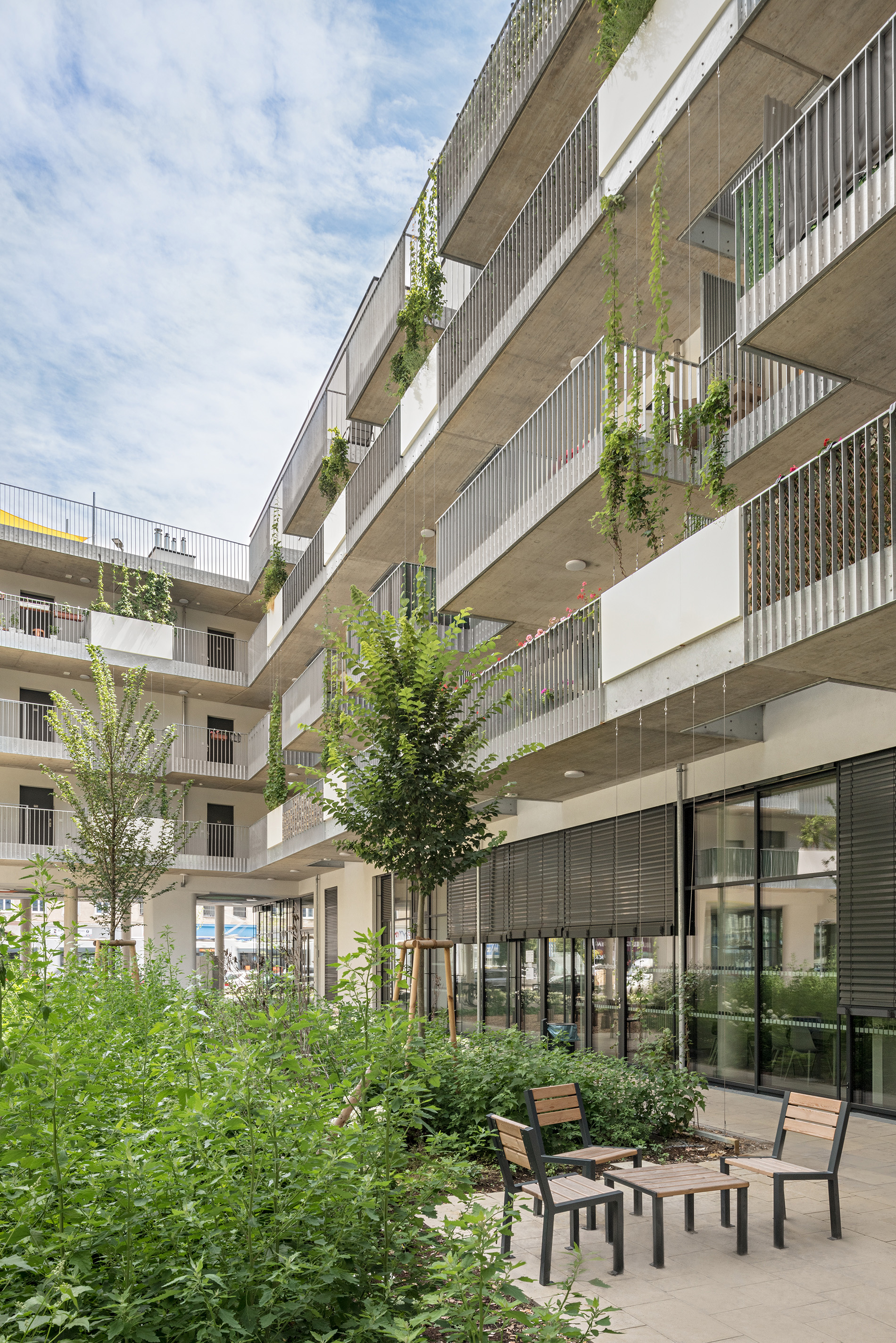
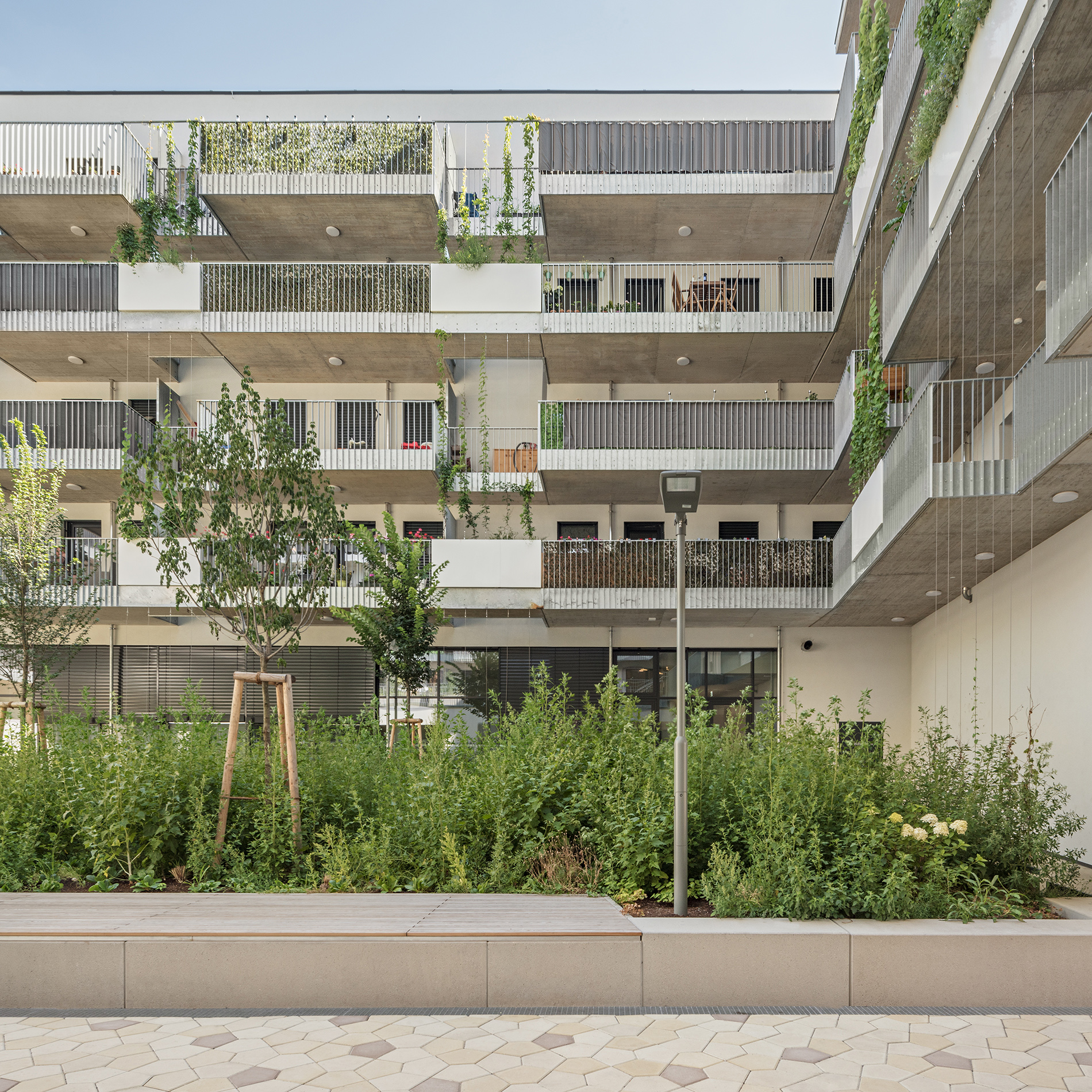
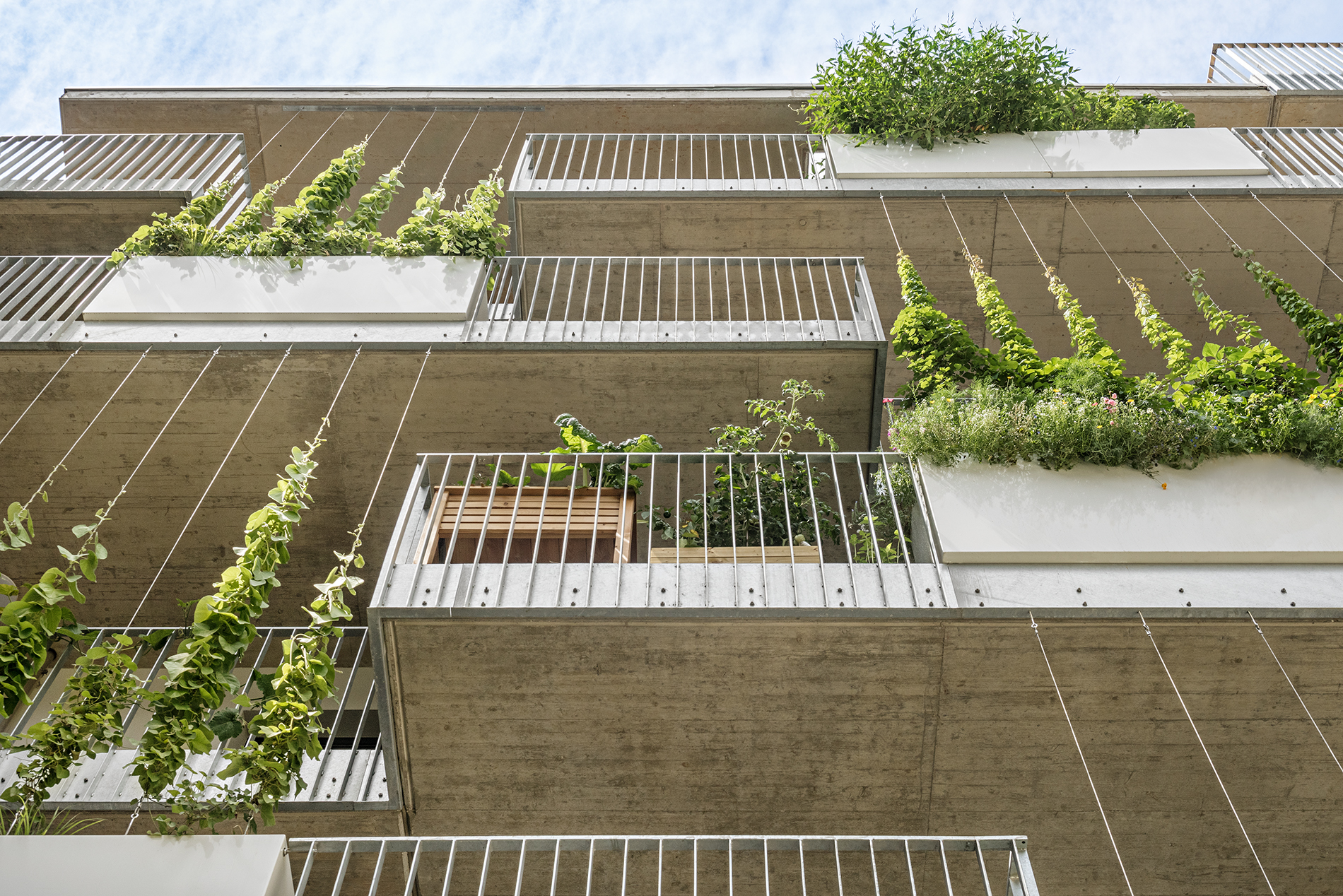
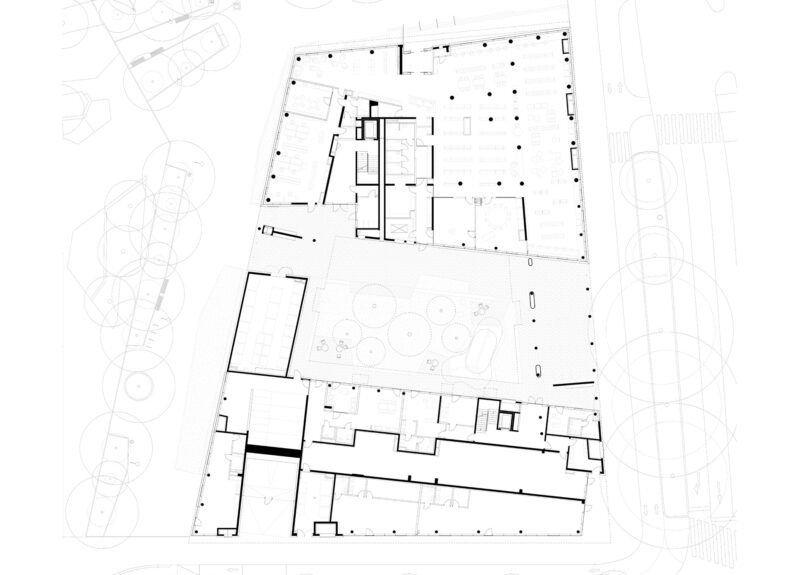
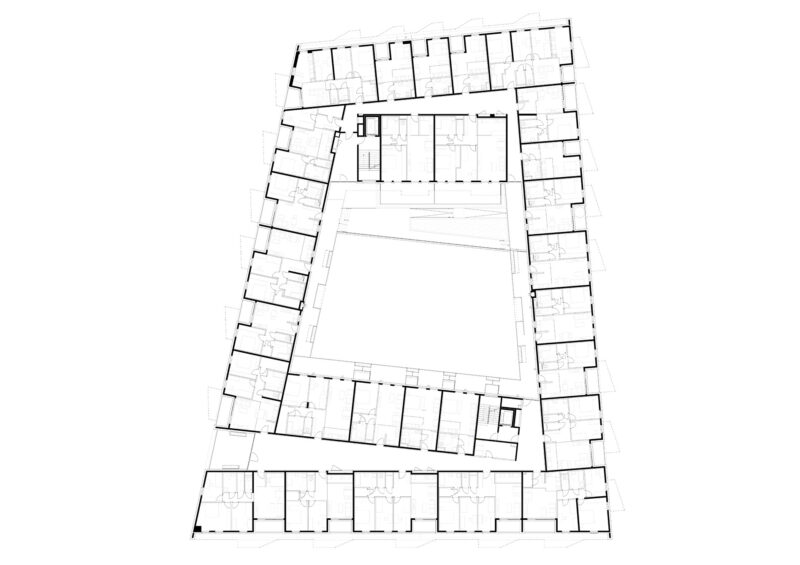
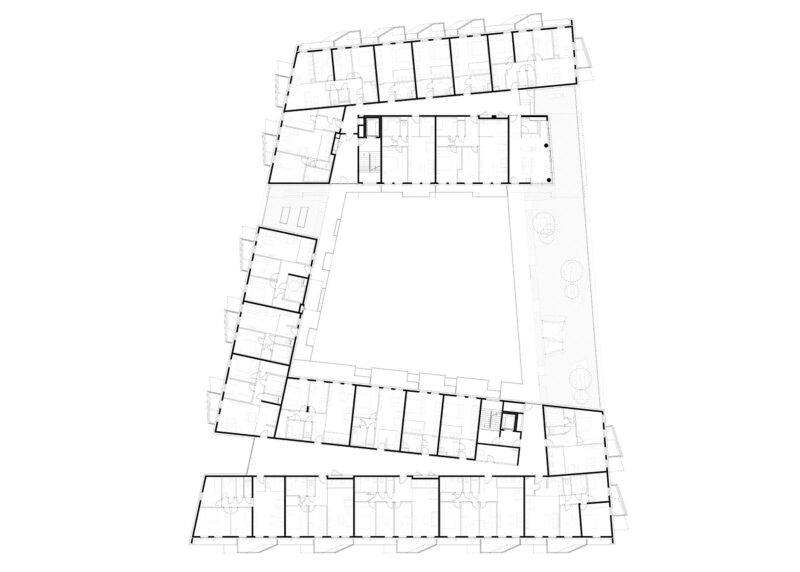
Apartment structure
The floor areas and number of the apartments are planned in accordance with the housing key for “Gemeindewohnungen NEU“ (new municipal apartments). In all there are 165 apartments on the site. In addition to a balcony the apartments along the access decks also have a small outdoor space on the deck. Instead of having a balcony on the street side certain apartments are allocated the entire access deck. This is possible where no further apartments are reached from this access deck. The apartment floor plans are based on an established system. From the corridor or access deck you enter a small hall or draught lobby from which, in most cases, the living area is entered. Bathroom and bedrooms are reached from an “intimate corridor”. The wide variety of private outdoor spaces offered is a further identity shaping characteristic. On the one hand there are the access decks and balconies already referred to, but there also individual balconies on the outer facades, continuous balcony slabs on the south facade of the high-rise building as well as loggias on the 1st floor of the building. The angular individual balconies consciously play with the idea of emerging onto the balcony from the living rooms and they grow wider at the far end.
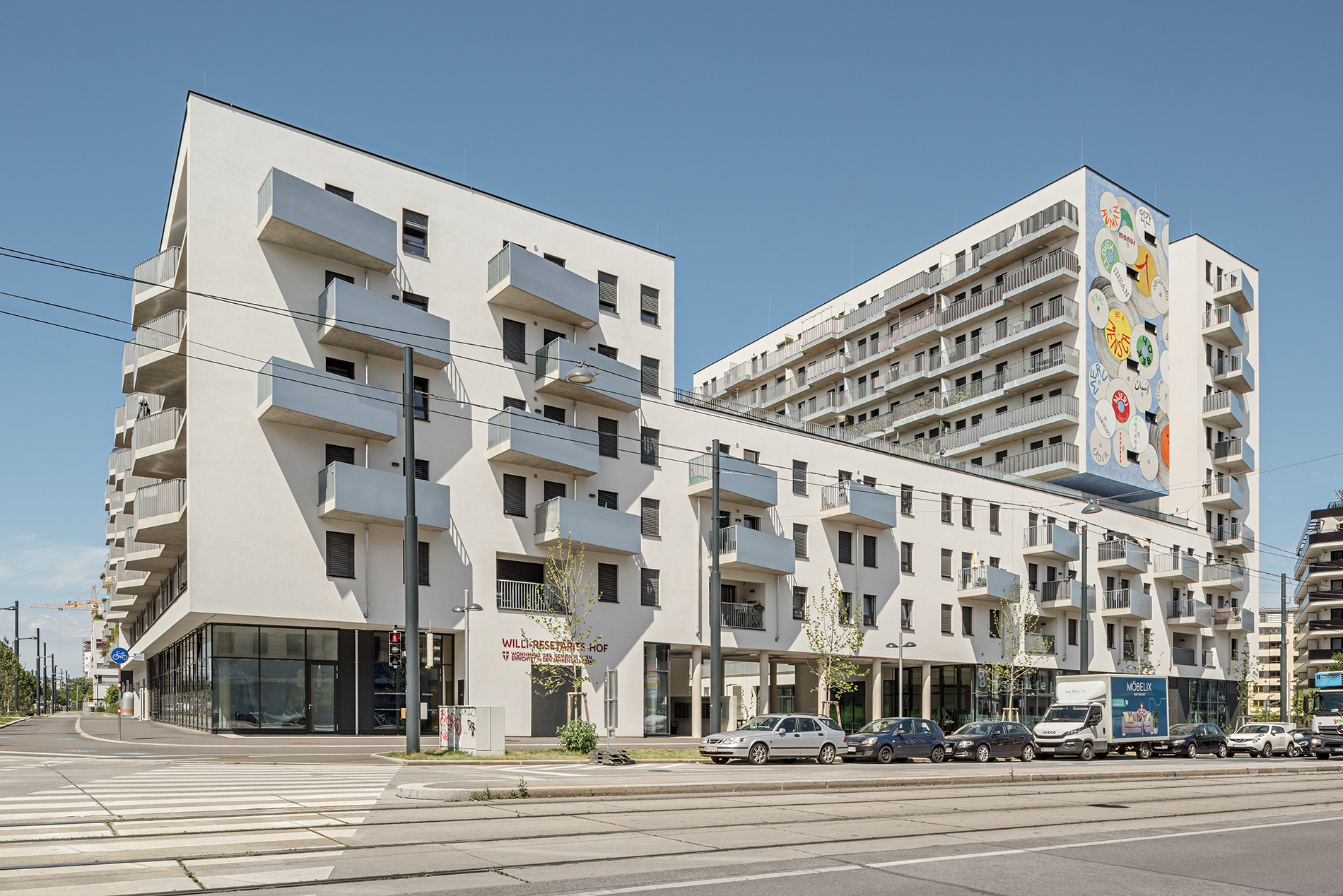
Library
For almost a century, Vienna's housing construction has been considered a model for other European cities. Time and again, the integration of cultural institutions, as found in the structures of the models, plays an important role in successful, multi-layered coexistence. Here in the "Neues Landgut" neighborhood, too, a 920 m² Vienna Library has been successfully located on the ground floor.
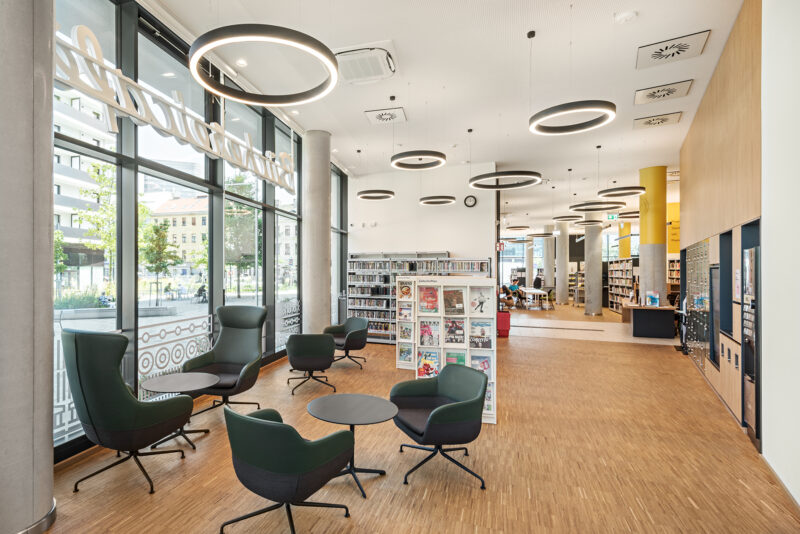
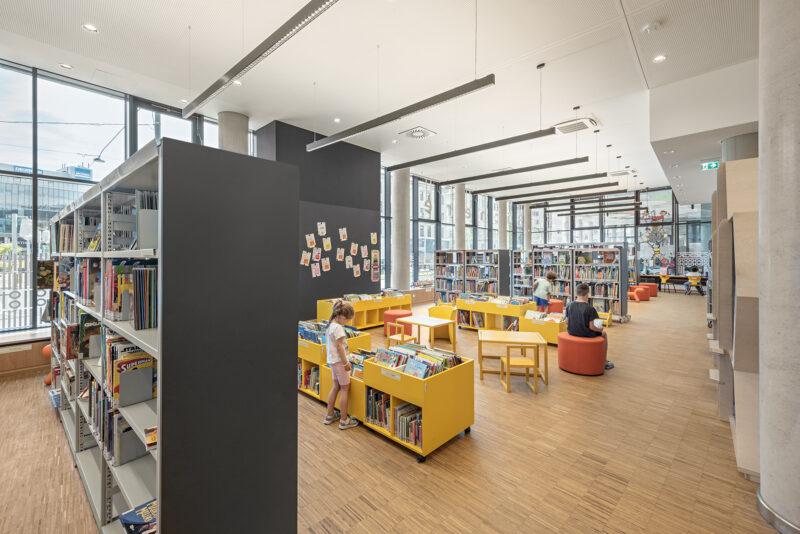
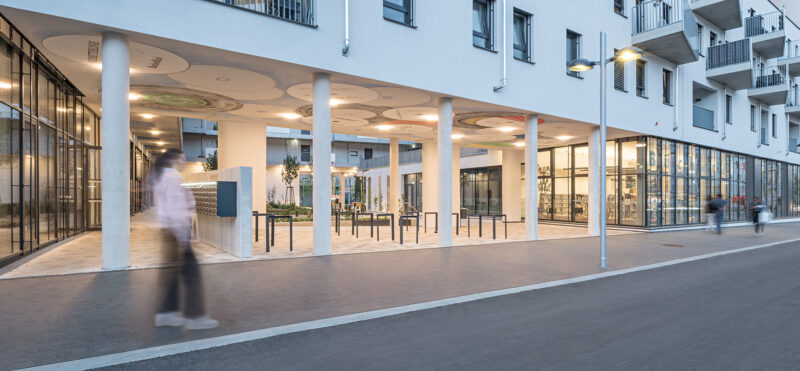
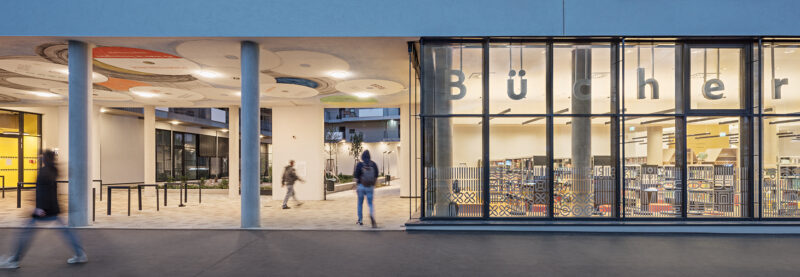
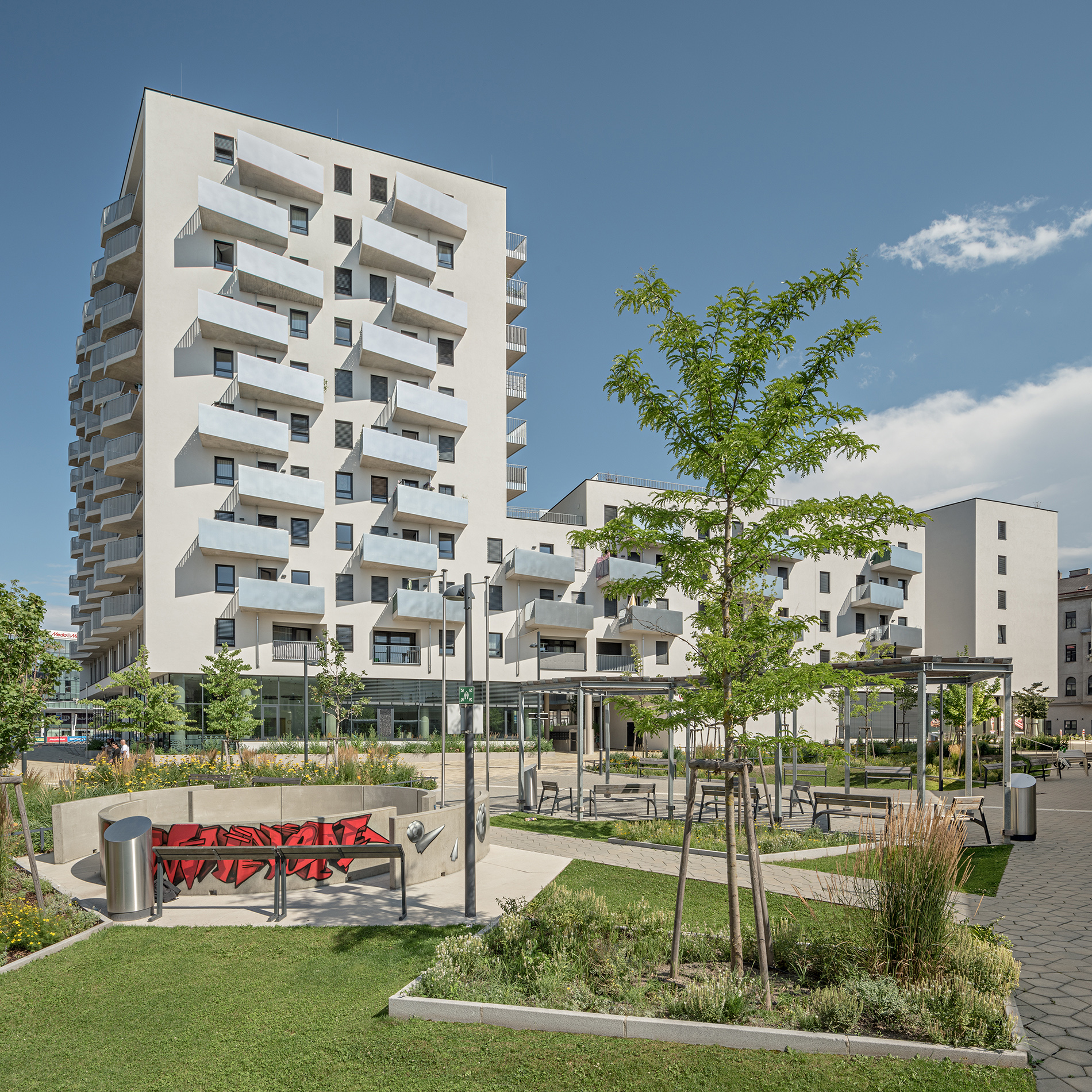
Architecture
Pichler & Traupmann Architects
Design
Bartosz Lewandowski (team leader)
Peter Grandits
Anna Gulinska
David Guisado
Tibor Koczian
Project team
Peter Grandits (project leader)
Nikola Beim
Iris Berger
Carlos Celles
Anna Gulinska
Florian Huber
Barbara Jarmaczki
Joachim Kess
Tibor Koczian
Bartosz Lewandowski
Ingrid Nunez Y.
Jan Niklas Schöpf
Severin Türk
Emirhan Veyseloglu
Wolfgang Windt
Arkady Zavialov
Client
WIGEBA Wiener Gemeindewohnungs Baugesellschaft m.b.H.WIGEBA Wiener Gemeindewohnungs Baugesellschaft m.b.H.
Landscape architecture
DND Landschaftsplanung, Vienna
Structural design and building physics
Dorr-Schober & Partner, Ziviltechnikergesellschaft mbH, Vienna
Building equipment
Gebäudetechnik Kainer GmbH, Rattersdorf
Electrical planning
Elektrotechnik Wunderl ZT GmbH, Rattersdorf
Art on the building
Johanna Kandl, Vienna
Hard facts
Start of planning: 2021
Start of construction: 2022
Completion: 2024
Usable floor area: 11.881 m²
Gross floor area: 16.988 m²
Location: Vienna, 10 district
Function: Residential and public library
Scope: Architectural planning
Photos
Hertha Hurnaus, Vienna
